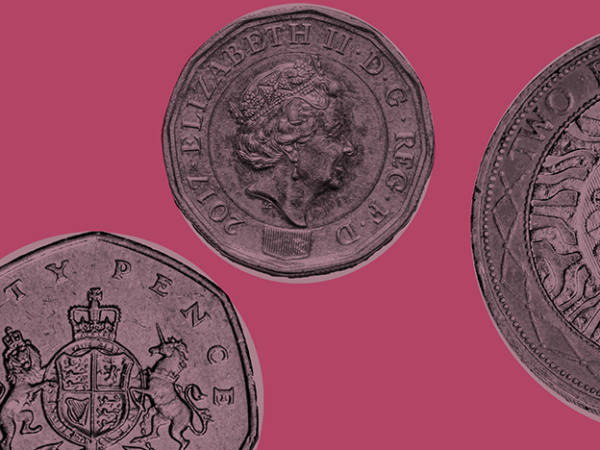Portfolio 1 | ||||
Kingfisher | Marks & Spencer |
BT Group | Mediclinic | Easyjet |
Centrica | Antofagasta | Glencore | Fresnillo | Admiral |
Portfolio 2 | ||||
Persimmon | Berkeley Group |
WPP | Reckitt Benckiser | British American Tobacco |
Melrose Industries | Sky | Coca-Cola HBC AG | Intertek | BP |
Assuming an equal investment in each company was made on 1 June 2014, the share prices in Portfolio 1 grew by 5 per cent over the next three years. Those in Portfolio 2 increased by 77 per cent. Between them, the chief executives of the companies in Portfolio 1 received a total of £13m in 2017. That was the least out of all FTSE 100 chief executives. Portfolio 2 comprises the 10 who received the most. Their total? £208m.
Historically, over two-thirds of a typical chief executive’s potential pay has been a long-term incentive plan (LTIP) – an award of shares in their company subject to performance targets assessed over the following three years. This period from mid-2014 to mid-2017 was chosen because, broadly speaking, performance during these three years determined the number of shares that were released from LTIP awards maturing in 2017.
What this less-than-rigorous comparison illustrates is that when company performance beats expectations, senior executives are likely to receive most, if not all, of their shares from awards made a few years earlier. They enjoy a double whammy because chances are that the share price will have soared as well. Conversely, a disappointing performance renders that original share award worthless. Eighteen FTSE 100 chief executives received nothing from maturing LTIPs last year (although some of these were because they had been appointed too recently to participate).
If executive pay largely consists of conditional share awards, it must inevitably be driven by share price performance. Yet in a recent green paper on corporate governance, most correspondents “expressed concern that LTIPs are not adequately aligning executive remuneration with long-term company performance”.
Distortions
Two companies, Melrose (MRO) and Persimmon (PSN), dominated the performance of portfolio 2. Neither awards shares on an annual basis, but instead each grants options every few years, and their senior executives happened to become eligible to exercise them last year. Between 2013 and 2016, for instance, Simon Peckham, Melrose Industries’ chief executive, received less than £1m each year, comfortably placing him near the bottom of the range for what FTSE 100 chief executives received. At Persimmon, Jeff Fairburn, its chief executive, regularly received about £2m each year over the same period. Their options that came in last year were rewarding each for five years’ work, rather than one, so it makes sense to exclude them from an analysis of annual pay. Even after excluding them, the chief executives of the remaining eight companies in portfolio 2 received a total of £118m and the share price of their companies rose on average by a still respectable 39 per cent.
Melrose Industries
The Melrose option plan was simple: compare the market value of the group in 2017 with that of 2012, and then issue shares equivalent to 7.5 per cent of any increase to satisfy the options. Almost all the increase in value goes to shareholders in return for a small dilution in their shareholding. Neither success nor failure costs them anything in cash. There is a paper cost, though, because of accounting conventions. These require the notional value of options to be charged as an expense to the profit-and-loss (P&L) account. But how can you value an option before you know what it will eventually pay out? The standard way is to use a Black-Scholes formula. That estimated that the grant would end up being worth £60m.
In other words, the best estimate was that if all went to plan, the top 10 executives would eventually share £60m, of which the four who are also directors would each receive about £10m. It seemed fair, since Melrose’s “buy, improve, sell” strategy hinges on their judgement – success or failure depends on their ability to make astute acquisitions and realise the potential of each acquired company.
By May 2017, when the 2012 share plan was assessed, the team had beaten all expectations. The Melrose share price had more than quadrupled. The value created for shareholders over those five years? £3.6bn. That entitled Mr Peckham and three other executive directors to shares worth £42m. With employer’s national insurance liability, the government took £25m, leaving them each with shares worth about £22m.
The Melrose options are all about wealth creation, both for shareholders and for the top executive team (who are also shareholders). Most shareholders like it, for in 2017 they agreed another option plan, based on a similar deal. This one will be for three years, rather than five, but any shares received will have to be kept for a further two years. The top 10 executives are expected to share £24.5m from 2020 onwards, but that will depend on how successful they are at improving GKN. They have their work cut out. But that could also be said of the challenges that faced them back in 2012.
Persimmon
About 140 Persimmon executives had options dating back to 2012, when people expected only a modest recovery in the housing market. Perhaps because of this, the scale of the award was generous. And the award was in market options, meaning that the executive would have to purchase the shares. The price set was Persimmon’s share price when the option was granted. But there was a controversial concession: this price would reduce according to how much cash Persimmon proceeded to return to shareholders.
By the end of 2017, when Mr Fairburn became eligible to exercise almost 2m shares, Persimmon’s share price had quadrupled and the price that they would cost him had fallen considerably. His potential gain on these shares – just 40 per cent of those outstanding – was £45m.
But what has to be disclosed as apparent pay seems distinctly odd. He has not yet exercised his options. For disclosure purposes, that’s beside the point. He won’t be liable for tax on them until he does. That too is irrelevant. The cost to him of one of his options has since become zero. Ignore that too. The actual amount of his gain won’t be known until he buys the shares, and since he has until the end of 2022 to do that, it could well go higher – £45m could be an underestimate. So what? All that has to be included in his ‘single figure of remuneration’ (which purports to represent the amount that executives actually receive during the year) is the notional value of Mr Fairburn’s options when his entitlement was confirmed on 31 December 2017.
When the scale of this was made public, there was an outcry. Hadn’t Persimmon and other builders exploited the speculative demand created by government policies? Surely this was mostly a windfall, and Persimmon’s executives really deserved a fraction of what their options were now worth? Mr Fairburn has since agreed to sacrifice almost a third of his entitlement to the shares and has said he will donate a meaningful amount to his own charitable trust, but the indignation continues.
From an investment point of view, we’re back to that wealth creation dilemma. In five years, Persimmon’s executive team managed to create £8bn for shareholders. How much should be due to them? The Melrose formula would say £600m. Persimmon is more modest. The total vested options, shared between its 133 senior executives, were merely worth a notional £212m.
Abuse of the single figure
Since large one-off distortions make comparing averages a thankless task, the median – that’s the mid-point of a range of figures – is normally considered to give fairer comparisons. Plough into the CIPD/High Pay Centre report and it says “median chief executive pay has been oscillating around the £3.9m mark since 2010/11”. It has hardly changed for seven years (see table).
FTSE 100 median single figure of total remuneration (SFTR) in £ thousands | |||||||||
Year | 2009 | 2010 | 2011 | 2012 | 2013 | 2014 | 2015 | 2016 | 2017 |
SFTR | 2,197 | 3,231 | 3,903 | 3,693 | 4,206 | 3,879 | 4,084 | 3,575 | 3,873 |
Since 2009, there have been 158 FTSE 100 constituents. This self-selects higher pay as weaker companies drop out and stronger ones join, but the impact is not too large. Despite these and other vagaries among a collection of very individually distinct entities, what executives have received has stayed flat, while employee pay has gone up. This is reflected in a narrowing indicative pay gap:
Median ratio of chief executive pay to employee pay package | ||
2015 | 2016 | 2017 |
95:1 | 84:1 | 77:1 |
The problem is that this single figure is often interpreted as what the individual will earn every year going forward – the pay package. But that’s not what it represents. It is an imperfect lagging indicator of decisions taken several years before. And despite all the evidence, the media has its own agenda. “Pay for UK’s top bosses climbs 11 per cent,” read one headline. “Fat cats are back in business,” said another. The distinct impression is that every chief executive’s pay has gone up, and it has outpaced everybody else’s. In fact, 43 received less in 2017, while 54 received more.
This cognitive bias feeds the public perception that nothing changes. The danger is that a government driven by populism will take draconian action based on misinformation. If companies are bearing down on pay, the impact will only show in the single figure in the future. Take Berkeley Group (BKG), where its chief executive, Rob Perrins, received £28m in 2017, ranking him third highest. Berkeley has responded to criticism by bringing in a pay cap. It has an April year-end and so Mr Perrins’ 2018 figure has already been published. It was £7.8m – still high, but heading downwards.
The CIPD/High Pay Centre survey is a tour de force. It has asked all the right questions. But the survey itself, the media coverage and this article have drawn very different conclusions. One of us must be wrong. Only you can decide who you think is right.










